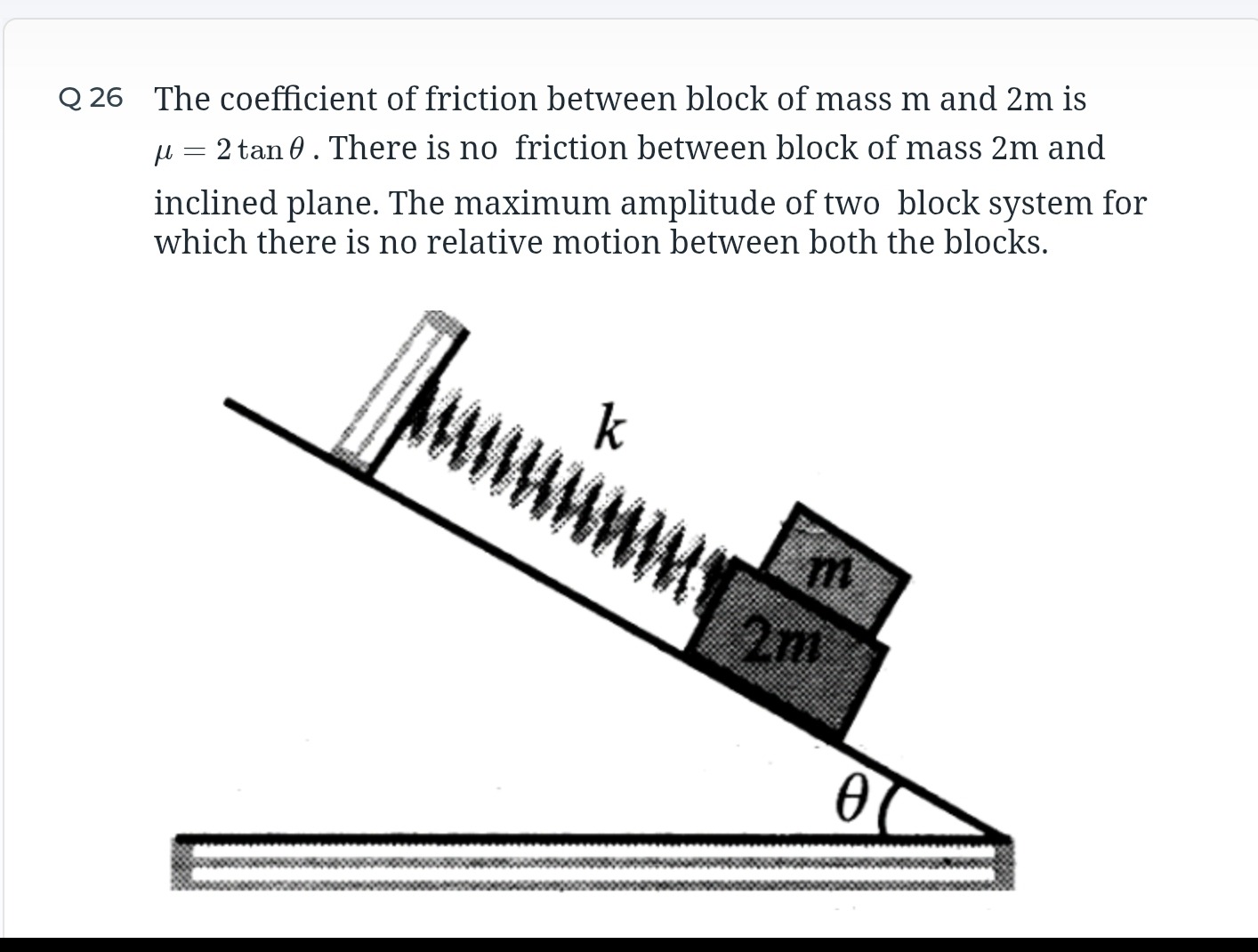Question
Question: The coefficient of friction between block of mass m and 2m is $\mu = 2 \tan \theta$. There is no fri...
The coefficient of friction between block of mass m and 2m is μ=2tanθ. There is no friction between block of mass 2m and inclined plane. The maximum amplitude of two block system for which there is no relative motion between both the blocks.

k3mgsinθ
Solution
The system oscillates with angular frequency ω=3mk. For block 'm', the forces along the incline are gravity (mgsinθ) and friction (fs). The equation of motion for block 'm' is ma=mgsinθ±fs. At the extreme positions, the acceleration is a=±ω2A.
At the lower extreme (maximum upward acceleration): m(ω2A)=mgsinθ−fs (friction acts downwards on 'm' to oppose upward motion) fs=mgsinθ−mω2A
At the upper extreme (maximum downward acceleration): m(−ω2A)=mgsinθ+fs (friction acts upwards on 'm' to oppose downward motion) fs=−mgsinθ−mω2A
Let's re-evaluate the forces. Up the incline is positive. a=−ω2x. At x=−A (lower extreme), a=ω2A (upwards). Block 'm' tends to slide up relative to '2m'. So friction fs on 'm' is downwards. ma=mgsinθ−fs m(ω2A)=mgsinθ−fs fs=mgsinθ−mω2A
At x=+A (upper extreme), a=−ω2A (downwards). Block 'm' tends to slide down relative to '2m'. So friction fs on 'm' is upwards. ma=mgsinθ+fs m(−ω2A)=mgsinθ+fs fs=−mgsinθ−mω2A
For no relative motion, ∣fs∣≤fs,max. fs,max=μN′=(2tanθ)(mgcosθ)=2mgsinθ.
From the lower extreme condition: ∣mgsinθ−mω2A∣≤2mgsinθ. −2mgsinθ≤mgsinθ−mω2A≤2mgsinθ. The right inequality: mgsinθ−mω2A≤2mgsinθ⟹−mω2A≤mgsinθ, which is always true. The left inequality: −2mgsinθ≤mgsinθ−mω2A⟹mω2A≤3mgsinθ⟹ω2A≤3gsinθ.
From the upper extreme condition: ∣−mgsinθ−mω2A∣≤2mgsinθ. ∣−(mgsinθ+mω2A)∣≤2mgsinθ. mgsinθ+mω2A≤2mgsinθ. mω2A≤mgsinθ. ω2A≤gsinθ.
The more restrictive condition is ω2A≤gsinθ. Maximum amplitude Amax is when ω2Amax=gsinθ. Amax=ω2gsinθ=k/(3m)gsinθ=k3mgsinθ.
